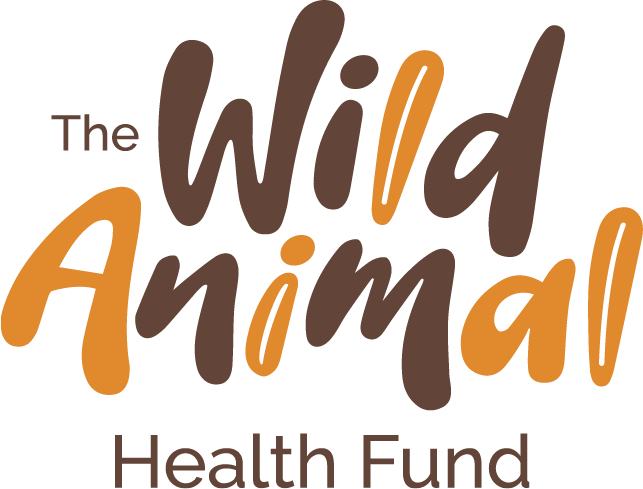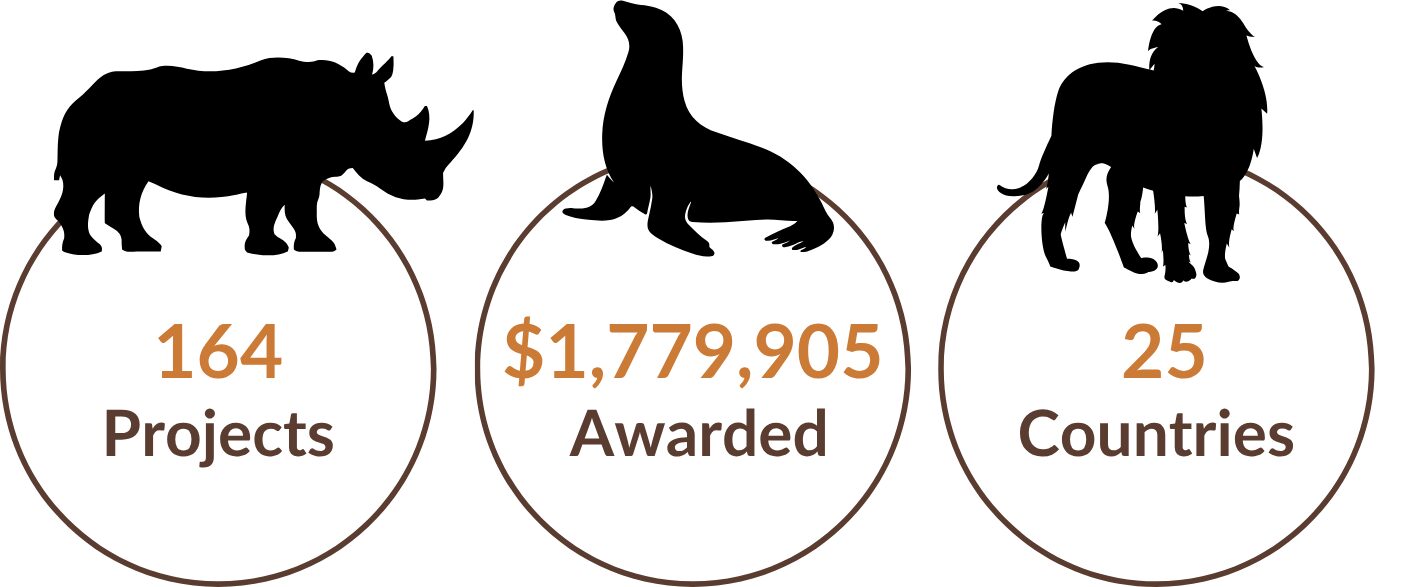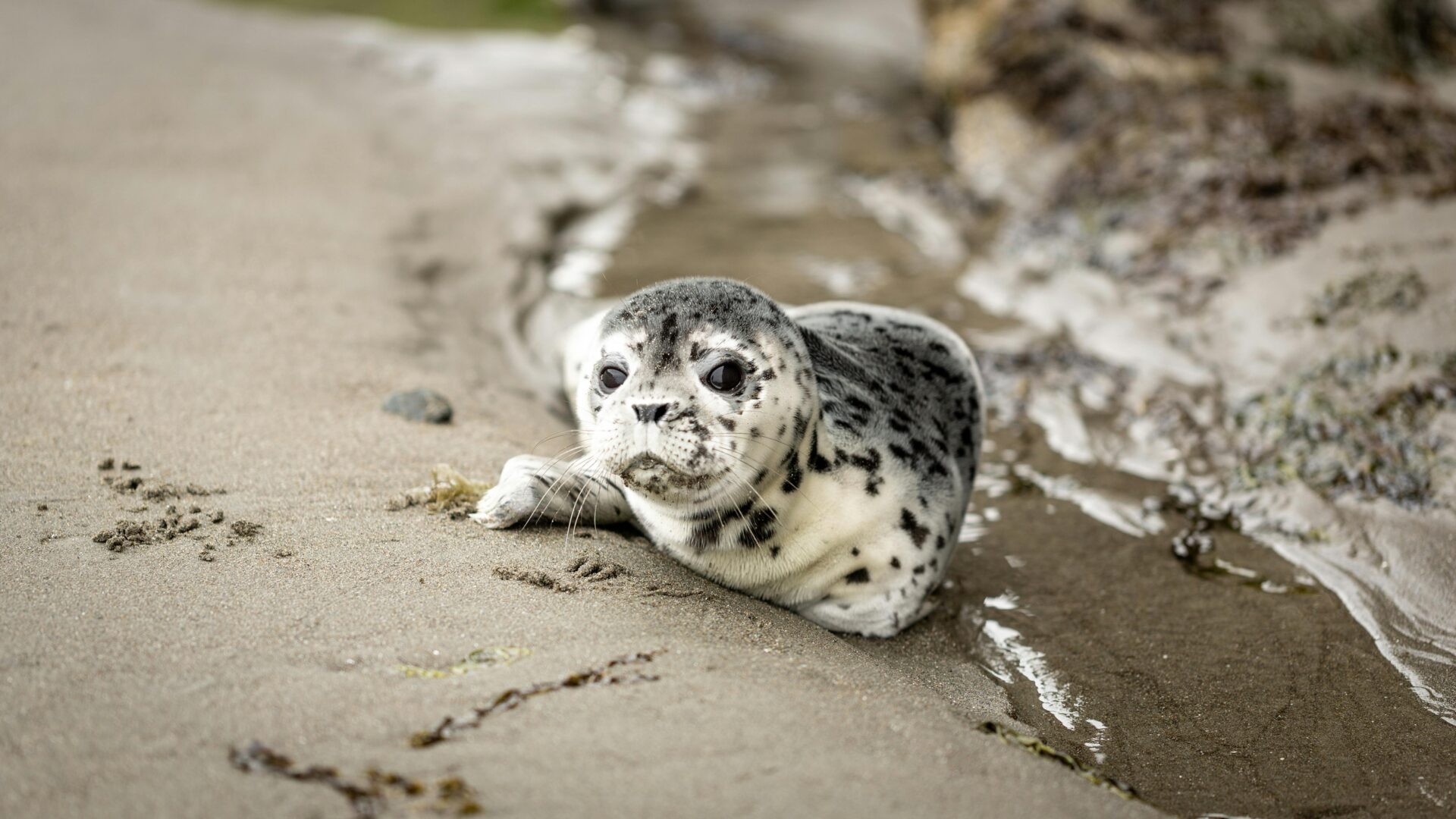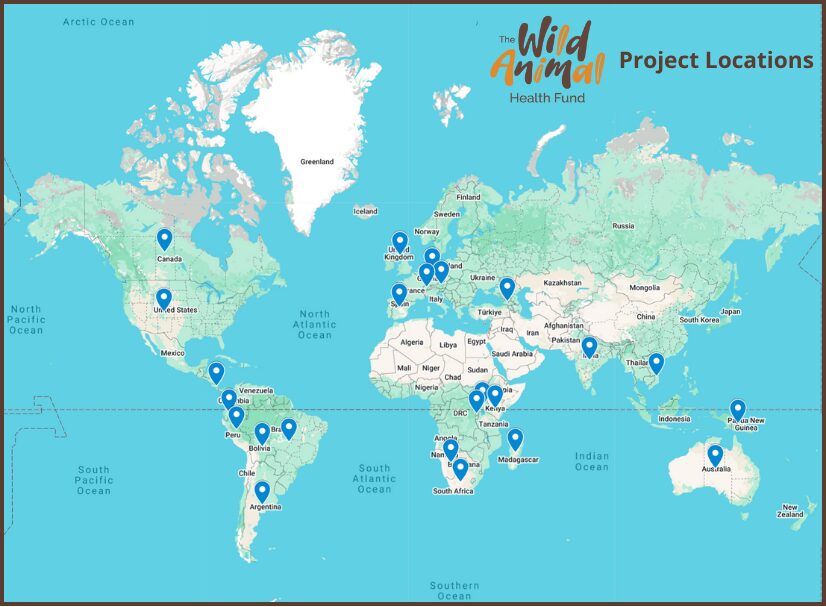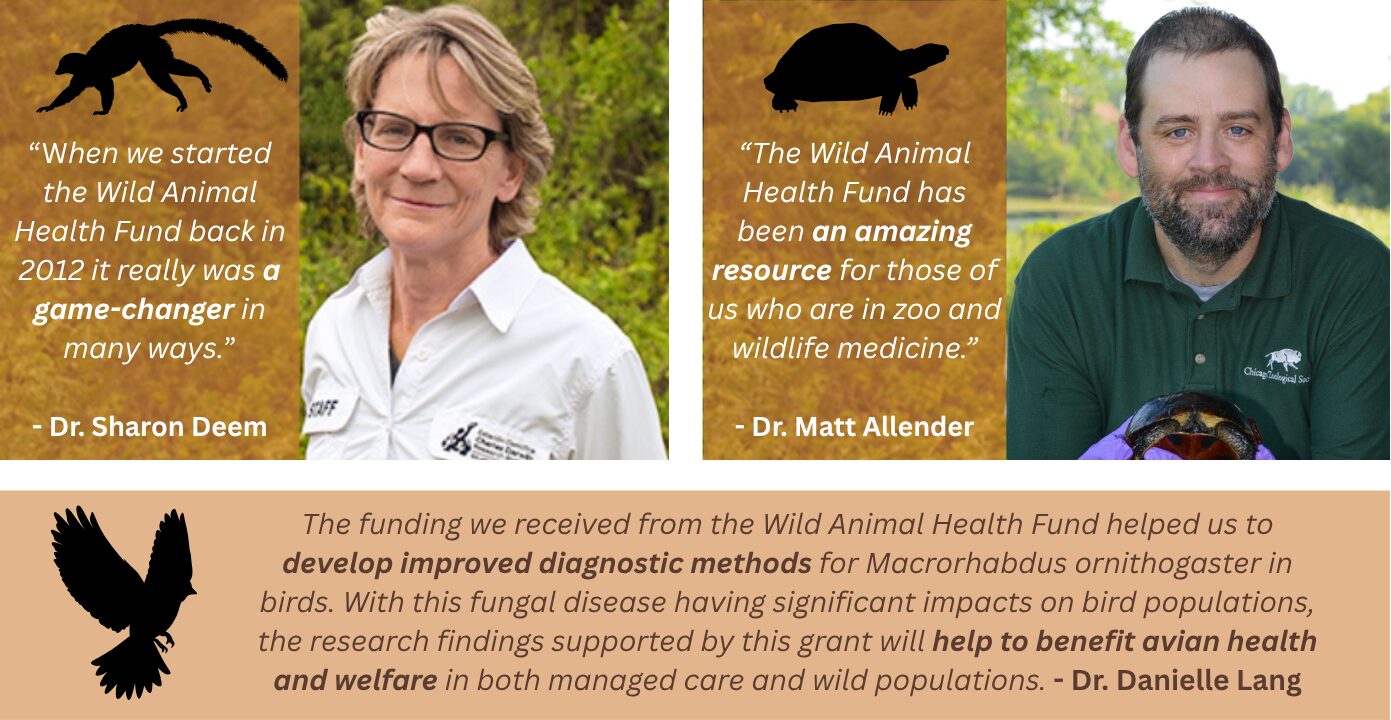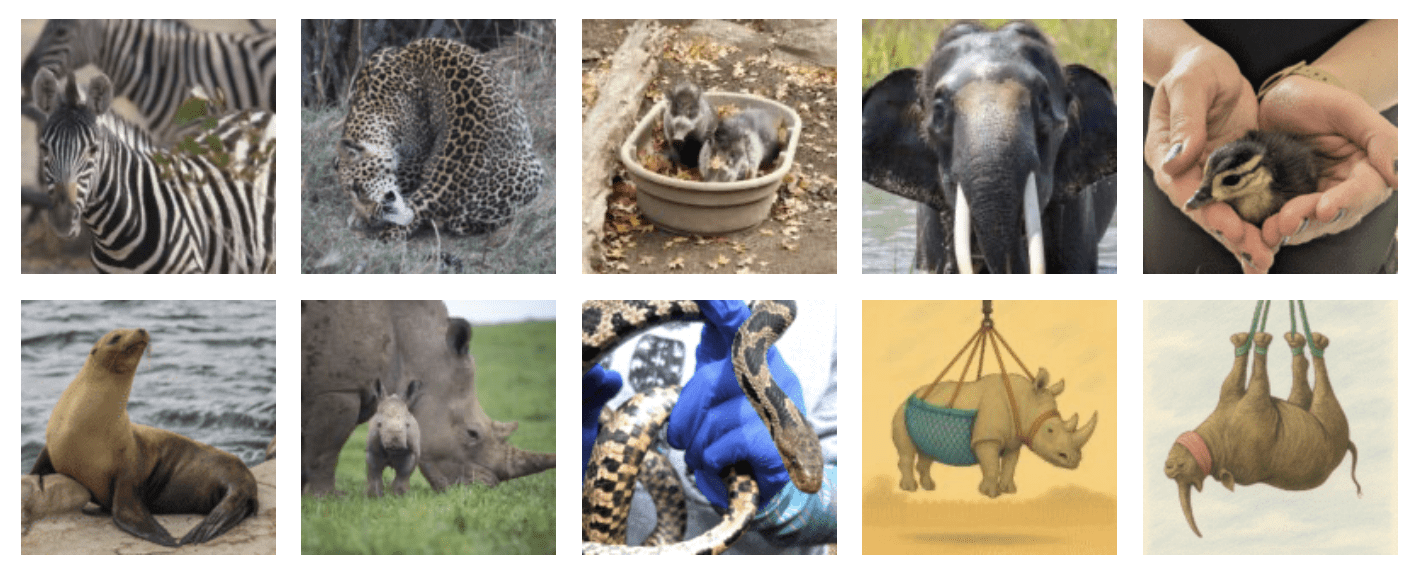Wild animal health is the missing piece
Science that saves wildlife.
The Wild Animal Health Fund (WAHF) was launched in 2012 by zoo and wildlife veterinarians at the American Association of Zoo Veterinarians to fill a critical gap: there’s little to no government funding for health research on non-domestic species. Rhinos, great apes, seabirds—and so many others—still get sick, need vaccines, anesthesia, pain relief, and better diagnostics. Animal health is the missing piece of wildlife conservation. Help us solve it.
Since 2012:
In the news:
New York Times feature (Sept. 19, 2025): She Wants to Start a Blood Bank for Zoos.
A WAHF grant is helping test the first frozen blood bank for zoo and aquarium animals—so lifesaving red-blood-cell transfusions are ready when minutes matter. Early results are promising: red blood cells from giraffes and elephants have survived freezing and thawing, pointing to a practical, multi-species blood reserve for future emergencies.
Our projects take place around the world, ensuring no species is left behind.
Step 1
Veterinarians from around the world apply for funding each November. Applicants must follow criteria set by the American Association of Zoo Veterinarians (AAZV). Proposals are scored for scientific merit, impact & relevance, feasibility, finances, and technical writing.
Step 2
Applications are evaluated and scored by the Research Grant Committee (RGC) in March. The RGC is comprised of 8 zoo and wildlife veterinarians, ranging in expertise from pathology to marine animals.
Step 3
The RGC submits their recommendation to the Executive Committee (EC) of AAZV. Once the EC has made their final approval, applicants are notified. Applicants that did not receive funding receive feedback from the RGC.
Step 4
Once all applicants have been notified, we can finally tell you the exciting new studies!
This typically takes place in May.
